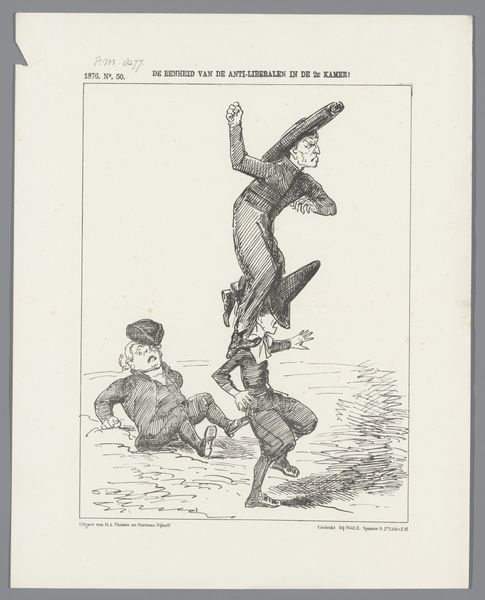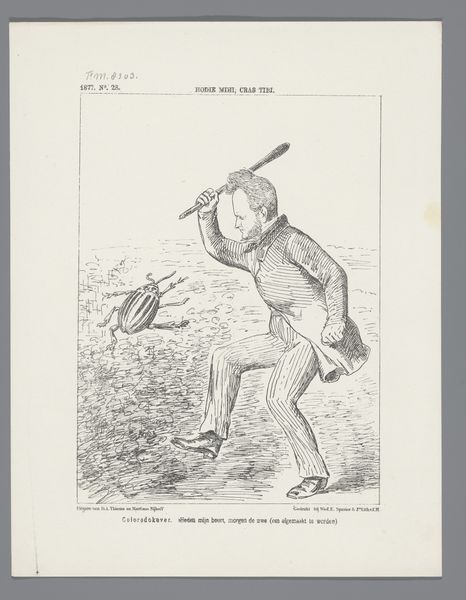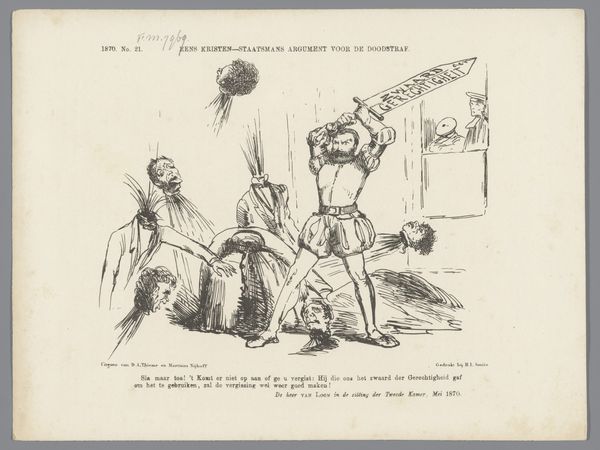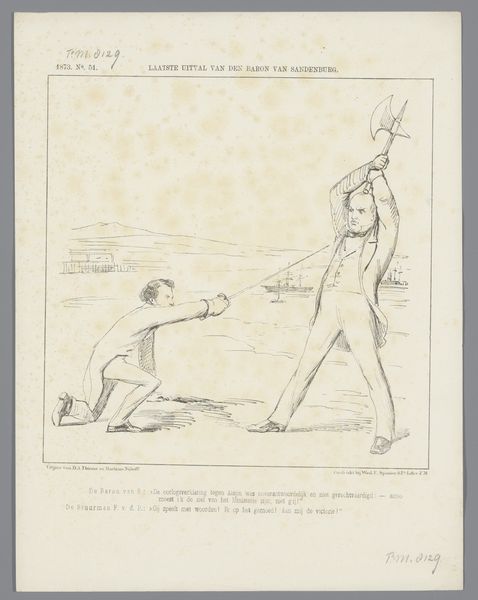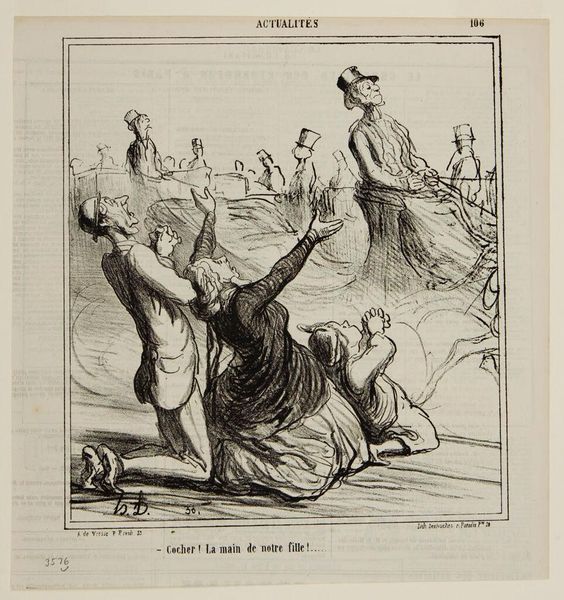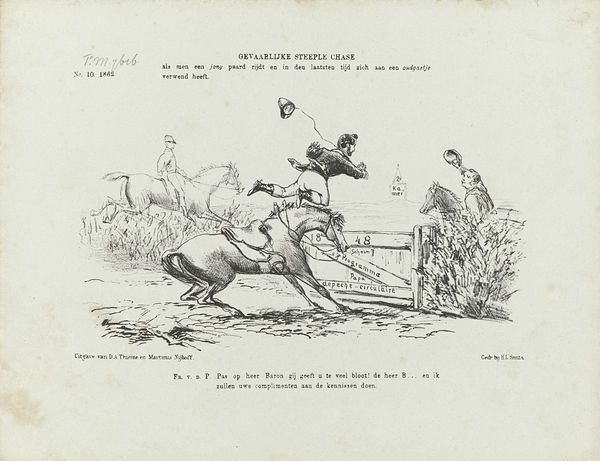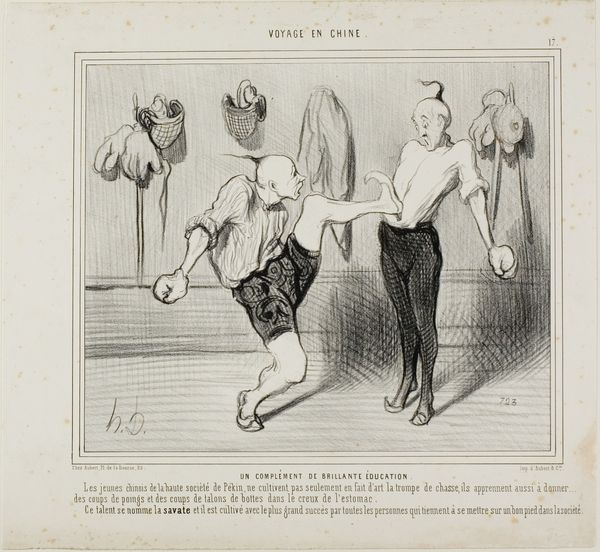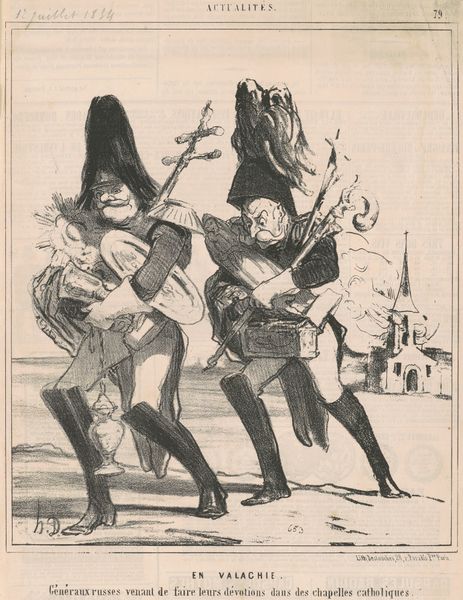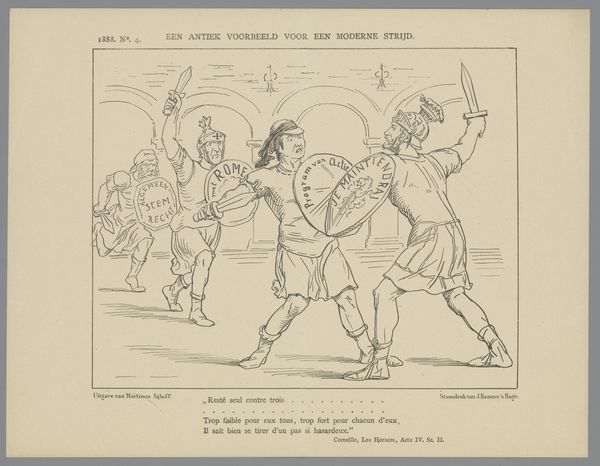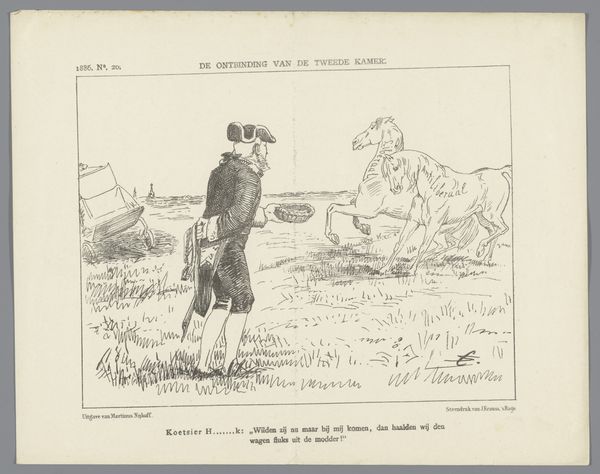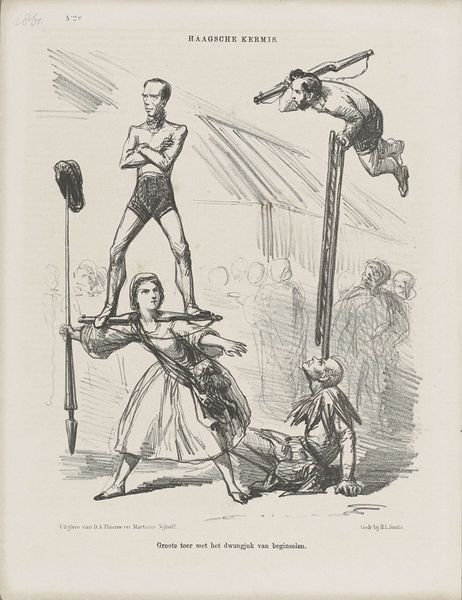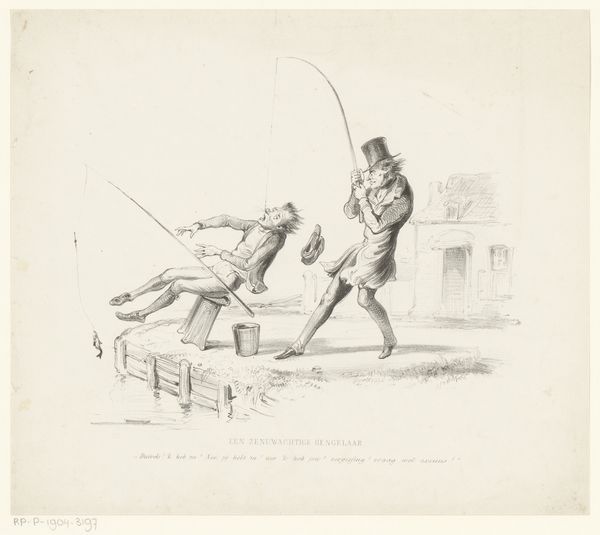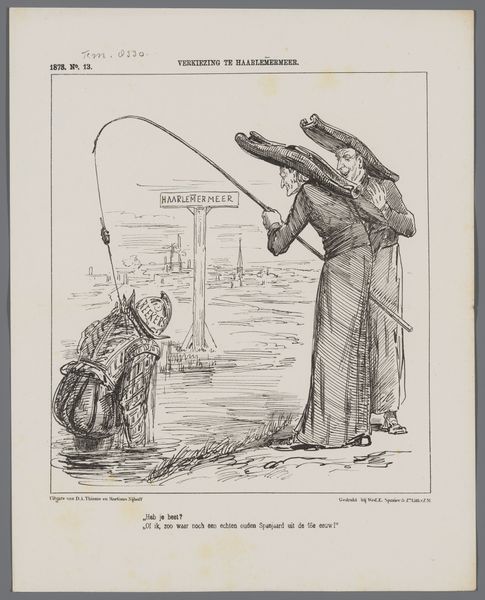
Spotprent op de ultramontaanse protesten tegen de viering van Heiligerlee, 1868 1867
0:00
0:00
drawing, paper, ink
#
drawing
#
caricature
#
figuration
#
paper
#
ink
#
genre-painting
Dimensions: height 215 mm, width 275 mm
Copyright: Rijks Museum: Open Domain
Editor: This is "Spotprent op de ultramontaanse protesten tegen de viering van Heiligerlee, 1868," a drawing in ink on paper by Johan Michaël Schmidt Crans, made in 1867. It looks like a political cartoon. I see some figures taking aim at a target, and it has quite a critical mood. What do you see in this piece? Curator: This caricature offers a glimpse into the religious and political tensions of the Netherlands in the late 19th century. The ultramontane movement sought to exert papal authority. Notice how the artist depicts them engaged in shooting practice? What could that suggest, in this context? Editor: Perhaps that they are attacking or undermining some aspect of Dutch culture. There's a banner that says "Dietscbe Warande," which I think is something Dutch. And I see some writing around the target… Curator: Precisely! The target symbolizes the celebration of the Battle of Heiligerlee, a significant event in Dutch history representing independence from Spanish rule. So the cartoon is commenting on an internal political debate by portraying religious conservatives aiming to rewrite the Dutch national narrative. How might feminist theory help unpack what's going on here? Editor: Well, the marksmen seem to all be men. Maybe there is a masculine need to dominate, to rewrite the history, or an effort to undermine anything not tied to their belief system. Curator: Exactly. This image shows how power is negotiated, visually and culturally. I think analyzing such caricatures shows how art plays an active role in shaping historical consciousness. Editor: This makes me look at political cartoons with new eyes, thinking of them as active agents in cultural discourse and understanding how gender can play into that. Curator: And it reveals how critical visual strategies are to understanding history.
Comments
No comments
Be the first to comment and join the conversation on the ultimate creative platform.
